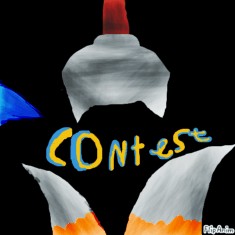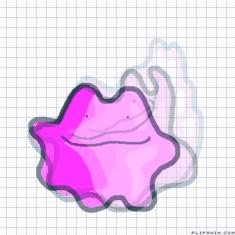Morning, DON'T ABUSE DOGS!


5 comments

cubic-yes[OP]
14.07.2020 10:36
LinkNO MORE DOG PORN VIDS!

cubic-yes[OP]
14.07.2020 10:45
LinkThe dog (Canis familiaris when considered a distinct species or Canis lupus familiaris when considered a subspecies of the wolf)[5] is a domesticated carnivore of the family Canidae. It is part of the wolf-like canids,[6] and is the most widely abundant terrestrial carnivore.[7][8][9][10][11] The dog and the extant gray wolf are sister taxa[12][13][14] as modern wolves are not closely related to the wolves that were first domesticated,[13][14] which implies that the direct ancestor of the dog is extinct.[15] The dog was the first species to be domesticated,[14][16] and has been selectively bred over millennia for various behaviors, sensory capabilities, and physical attributes.[17]
Their long association with humans has led dogs to be uniquely attuned to human behavior[18] and they are able to thrive on a starch-rich diet that would be inadequate for other canids.[19] Dogs vary widely in shape, size and colors.[20] They perform many roles for humans, such as hunting, herding, pulling loads, protection, ass

cubic-yes[OP]
14.07.2020 10:46
LinkThe term dog typically is applied both to the species (or subspecies) as a whole, and any adult male member of the same.
An adult female is a *****.
An adult male capable of reproduction is a stud.
An adult female capable of reproduction is a brood *****, or brood mother.
Immature males or females (that is, animals that are incapable of reproduction) are pups or puppies.
A group of pups from the same gestation period is called a litter.
The father of a litter is a sire. It is possible for one litter to have multiple sires.
The mother of a litter is a dam.
A group of any three or more adults is a pack.

cubic-yes[OP]
14.07.2020 10:46
LinkIn 1758, the Swedish botanist and zoologist Carl Linnaeus published in his Systema Naturae the binomial nomenclature – or the two-word naming – of species. Canis is the Latin word meaning "dog",[21] and under this genus he listed the dog-like carnivores including domestic dogs, wolves, and jackals. He classified the domestic dog as Canis familiaris, and on the next page he classified the wolf as Canis lupus.[2] Linnaeus considered the dog to be a separate species from the wolf because of its cauda recurvata - its upturning tail which is not found in any other canid.[22]
In 1999, a study of mitochondrial DNA indicated that the domestic dog may have originated from multiple grey wolf populations, with the dingo and New Guinea singing dog "breeds" having developed at a time when human populations were more isolated from each other.[23] In the third edition of Mammal Species of the World published in 2005, the mammalogist W. Christopher Wozencraft listed under the wolf Canis lupus its wild subspecies, and prop

cubic-yes[OP]
14.07.2020 11:07
LinkThe origin of the domestic dog includes the dog's genetic divergence from the wolf, its domestication, and its development into dog types and dog breeds. The dog is a member of the genus Canis, which forms part of the wolf-like canids, and was the first species and the only large carnivore to have been domesticated.[14][27] Genetic studies comparing dogs with modern wolves show reciprocal monophyly (separate groups), which implies that dogs are not genetically close to any living wolf and that their wild ancestor is extinct.[28][14] An extinct Late Pleistocene wolf may have been the ancestor of the dog,[27][1] with the dog's similarity to the extant grey wolf being the result of genetic admixture between the two.[1] In 2020, a literature review of canid domestication stated that modern dogs were not descended from the same Canis lineage as modern wolves, and proposes that dogs may be descended from a Pleistocene wolf closer in size to a village dog.[29]
The genetic divergence between dogs and wolves occurr






